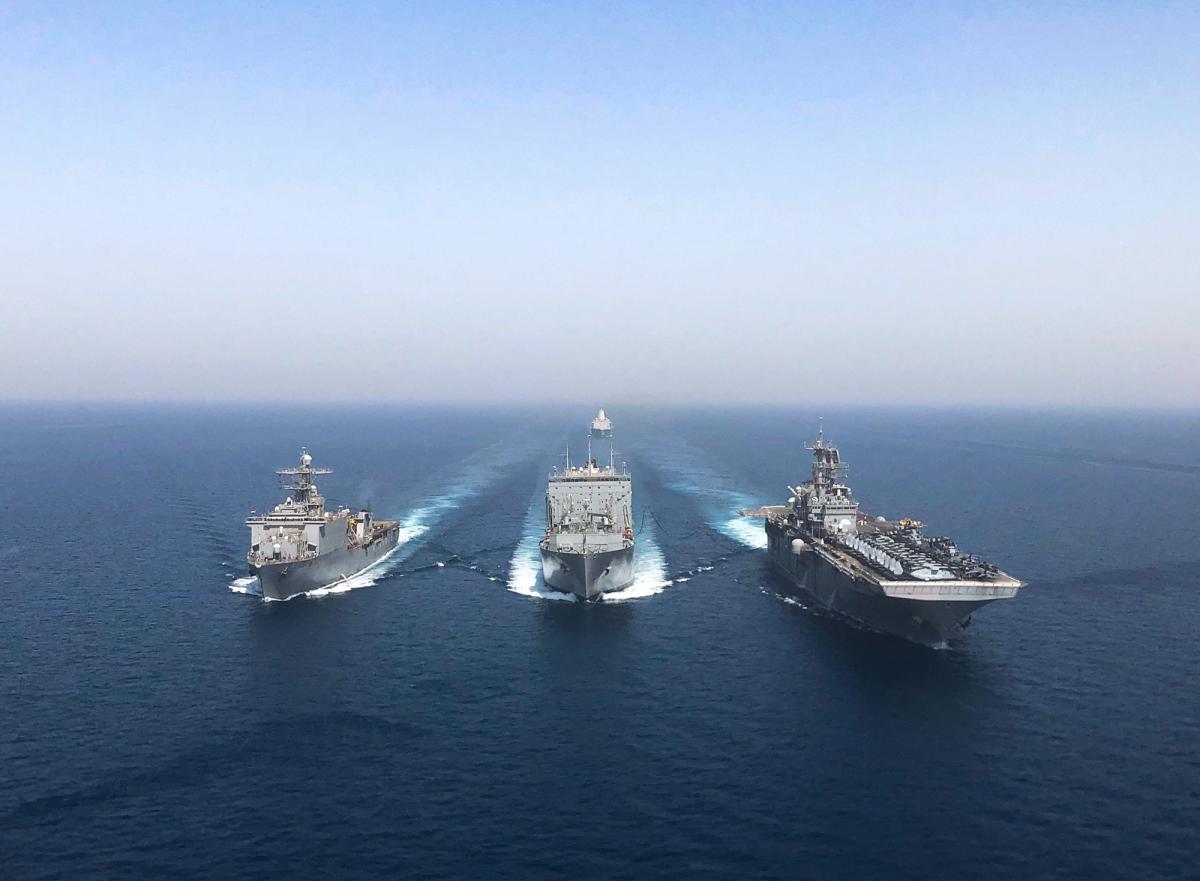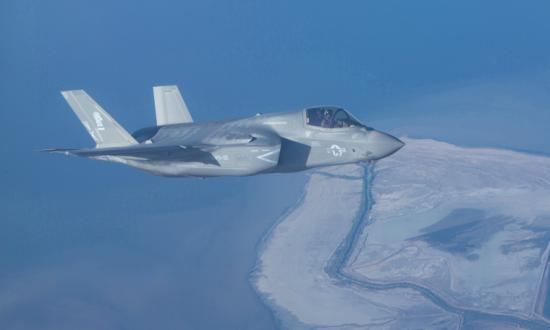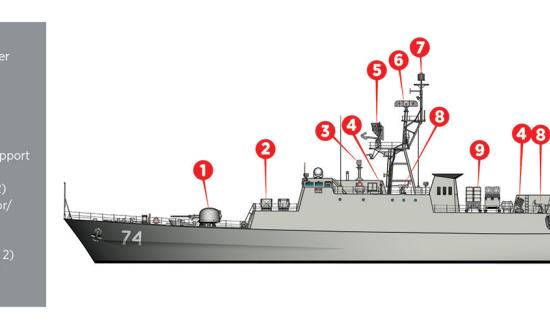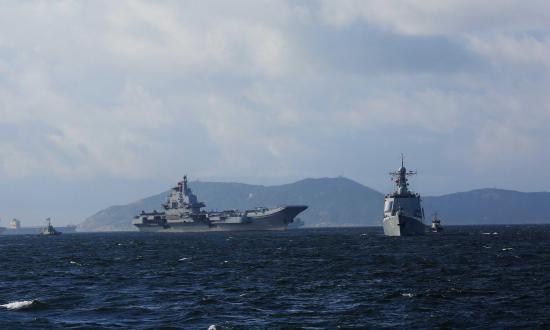The Middle East has been strategically important to the world’s global powers since the turn of the 20th century for a single reason—the industrialized economies of the world are highly dependent on oil. To secure reliable access to oil, the United States has been engaged in an uninspiring 60-year strategy aimed at “maintaining stability” in the Middle East. That strategy has worn many faces over the years, from the Twin Pillars policy of the Cold War, to Dual Containment during the Clinton Administration, through the Global War on Terrorism, and ultimately to a rudderless and undefined contemporary strategy that seems to have as its goal simply to keep the region from descending into outright chaos. After 40 years of near continuous conflict in the region, it is time to completely reevaluate U.S. policy and, by extension, the U.S. Navy presence in the Arabian Gulf.
Despite 40 years of policy aimed at stability, today’s Middle East strategic landscape is more complex than ever and shaped by a number of competing interests. At the heart of much of the current instability in the region is the underlying conflict between Saudi Arabia and Iran. The two nations are engaged in an ongoing competition for influence as each tries to assert itself as the regional hegemonic power. This conflict is currently playing out most visibly as a proxy war in Yemen. Saudi Arabia relies on more than $100 billion dollars in foreign military sales from the United States as well as intelligence and logistical support in fighting this war. At the same time, Iran has recently begun targeting Saudi oil infrastructure and continues to fund and back proxies in Iraq, Syria, Lebanon, and the Palestinian territories.
Iran also continues to threaten Israel, another strategic U.S. ally in the region, through its support for Lebanese Hezbollah and Hamas. The civil war in Syria has emboldened Iranian activity in the Levant, and the Iraq war resulted in greater Iranian influence in that country, despite U.S. efforts to minimize it. With the U.S. withdrawal from the Joint Comprehensive Plan of Action (JCPOA) nuclear agreement and subsequent imposition of crippling sanctions on the Iranian economy, Iran has retreated to its belligerent posture regarding its nuclear program in an attempt to influence the European powers to limit the sanctions impact.
It’s About Iran
For much of the past 40 years the center of gravity of American policy in the Middle East has been Iran. Prior to the overthrow of the Shah in 1979, and the subsequent hostage crisis, Iran was an essential U.S. ally against Soviet influence in the Middle East. Iran and Iraq, as the “twin pillars” of U.S. counter-Soviet policy in the region, were critical to reliable Western access to Middle East oil. The overthrow of the Shah in the wake of the Islamic revolution denied the United States one of its critical allies.
In May 1987, during the Iran-Iraq war that involved both nations targeting oil tankers in the Gulf, the USS Stark (FFG-31) was nearly sunk by two Exocet missiles fired from Iraqi Mirage F-1 fighters. The poorly trained Iraqi pilots had mistaken the ship for an Iranian merchant. Thirty-seven sailors were killed and another twenty-one wounded. In April 1988, the USS Samuel B. Roberts (FFG-58) was nearly sunk after an Iranian mine tore a 21-foot hole in its hull. The United States responded with Operation Praying Mantis, the largest U.S. naval surface engagement since World War II. It resulted in the destruction of two oil platforms and more than half the Iranian Navy’s operational surface fleet.
The Tanker War culminated that July with the downing of commercial Iran Air flight 655 by the cruiser USS Vincennes (CG-49). Amid high tensions, the ship mistook the airliner for an attacking Iranian F-14. All 290 passengers were killed. While the incident was an accident, most Iranians were convinced the United States purposefully destroyed the plane. The incident also convinced the Iranians that the United States had truly sided with Iraq and there was no way for Iran to successfully continue the war.
Iran agreed to UNSC Resolution 598 and a ceasefire went into effect on 22 July 1988, effectively ending the Iran-Iraq War.1 The war’s most lasting effect was a massively increased U.S. military presence in the region and closer relationships with the Gulf Arab nations. That presence would increase further after the 1991 Gulf War. Today, the U.S. Fifth Fleet, headquartered in Bahrain, for most of the year is in operational control of at least one carrier strike group, one expeditionary strike group, multiple surface combatants, submarines, and squadrons of maritime patrol and reconnaissance aircraft. In 2019, the Navy had as many as 28,000 personnel deployed to the region—more than any other area of responsibility. As the U.S. Navy shifts greater focus to the Pacific, is this large, continuous presence and its associated infrastructure is really still necessary?
A Gulf of Diminishing Significance
Any naval strategist worth the name has read Alfred Thayer Mahan’s The Influence of Sea Power on History. It is still studied at the Naval War College as one of the seminal works on modern naval strategy. Mahan believed that access to the sea is inescapably tied to economic vitality and, following its British heritage, the United States embraced the necessity of being a naval power. In its post-World War II superpower role, the United States carried that idea forward in securing the global commons for economic purposes as well providing hard power critical to underpinning the Cold War alliance structure. In 1979, this was as true in the Arabian Gulf as it was in the Atlantic and the Pacific.
With Iran positioned on the Strait of Hormuz, a Mahanian strategic choke point, it was in a position to threaten free access to the global commons and upset the balance of power in the region. This put Iran in a position to threaten the U.S. economy by choking off its access to Middle East oil. U.S. strategy in the region since then can be viewed through this lens. Access to the global commons in the Gulf means the free flow of shipping, and in particular the free flow of oil tankers.
In recent years, however, U.S. reliance on Gulf oil has diminished. While Saudi Arabia has maintained some of the world’s richest oil reserves, the United States has also emerged as one of the world’s leading oil producers. Limiting dependence on foreign oil has long been a mantra of U.S. policy makers. The 1973 OPEC oil embargo started a world-wide recession that led to fuel rationing in the United States. A second crisis occurred as a result of crude oil price spikes following the 1979 revolution in Iran. The economic impact of rising oil prices, coupled with the Iran hostage crisis, was largely responsible for President Carter not being reelected in 1980 and provided an enduring lesson for future administrations.
Current U.S. production capacity means the country is effectively energy independent. However, the highly integrated nature of the global oil supply means the United States is still not immune to fluctuations in that supply. But it would be a mistake to conclude that lack of immunity means the United States must maintain a policy of continuing to bear such a heavy burden for ensuring stability in the Middle East. Iranian oil production is decreasing as a share of global production and therefore Iran’s ability to unilaterally affect the global market is minimal. In addition, most of the Arab OPEC member states seem to have reconciled with the reality of Israel in the Middle East, have healthy relations with the United States, and have economies highly reliant on healthy global oil markets. Access to oil can no longer justify an expanded U.S. Navy presence in the Gulf in the current strategic environment.
That leaves the impetus to support ongoing theater security commitments as the remaining justification. Carrier-based aviation played a significant role in the war to defeat the ISIS caliphate. The Navy presence in the Gulf deters malign Iranian activity and is an important component of the U.S. strategy to support Israel. However, further carrier-based air support can be provided from the U.S. Sixth Fleet area of operations in the Mediterranean. Sixth Fleet already plays a significant role in the missile defense of Israel, and naval assets stationed in the Mediterranean are ideally positioned for any future support mission in Syria that may be levied on the Navy. Saudi Arabia and the other Gulf Arab states, along with continued U.S. economic sanctions and diplomatic pressure, should sufficiently deter undesirable Iranian behavior.
It is clear that the United States is in a period of great power competition with China reminiscent of the Cold War. U.S. Cold War strategy was based on George Kennan’s idea of containing the Soviet Union and global communism. As during the Cold War, much of the contest with China will take place at sea. Unlike the Cold War, the competition with China does not take place under a cloud of mutual nuclear destruction. Likewise, rather than outright containment, the United States is engaged in a long-term policy to reconcile the Chinese state capitalism model with Western market capitalism.
China is an industrialized nation that relies heavily on foreign oil. It is the largest consumer of Iranian oil and does not feel constrained by U.S. sanctions aimed at Iran’s oil industry. However, the United States does not need to fear growing Chinese influence in Iran as it feared Soviet influence. China has shown itself no friend to its own Muslim communities and has little with which to influence Iranian policy.
As the Navy increasingly turns toward the Pacific and the growing threat posed by China, it does so without a corresponding growth in resources. This means it must smartly prioritize the allocation of the assets it has available. The need to maintain a significant number of naval forces in the Middle East region is now dubious. The economics of oil in the 21st century mitigate many of the concerns that drove policy in the region for the past 40 years. The Army and U.S. Special Operations Command own the counterterrorist mission. What Navy mission exists in the region that outweighs the need for greater naval forces in the Western Pacific? The United States continues to suffer from the hangover left by Islamic Revolution in 1979, and it is now allowing the specter of a resurgent Iran to cloud its strategy. It is time to see the region as it is—a strategic backwater from a maritime perspective. The Iranian boogeyman is just that, and while the United States remains obsessed with it, the Chinese are breaking into the U.S. house and robbing us blind.
1. Michael Axworthy, A History of Iran: Empire of the Mind (New York: Basic Books, 2008), 269.







